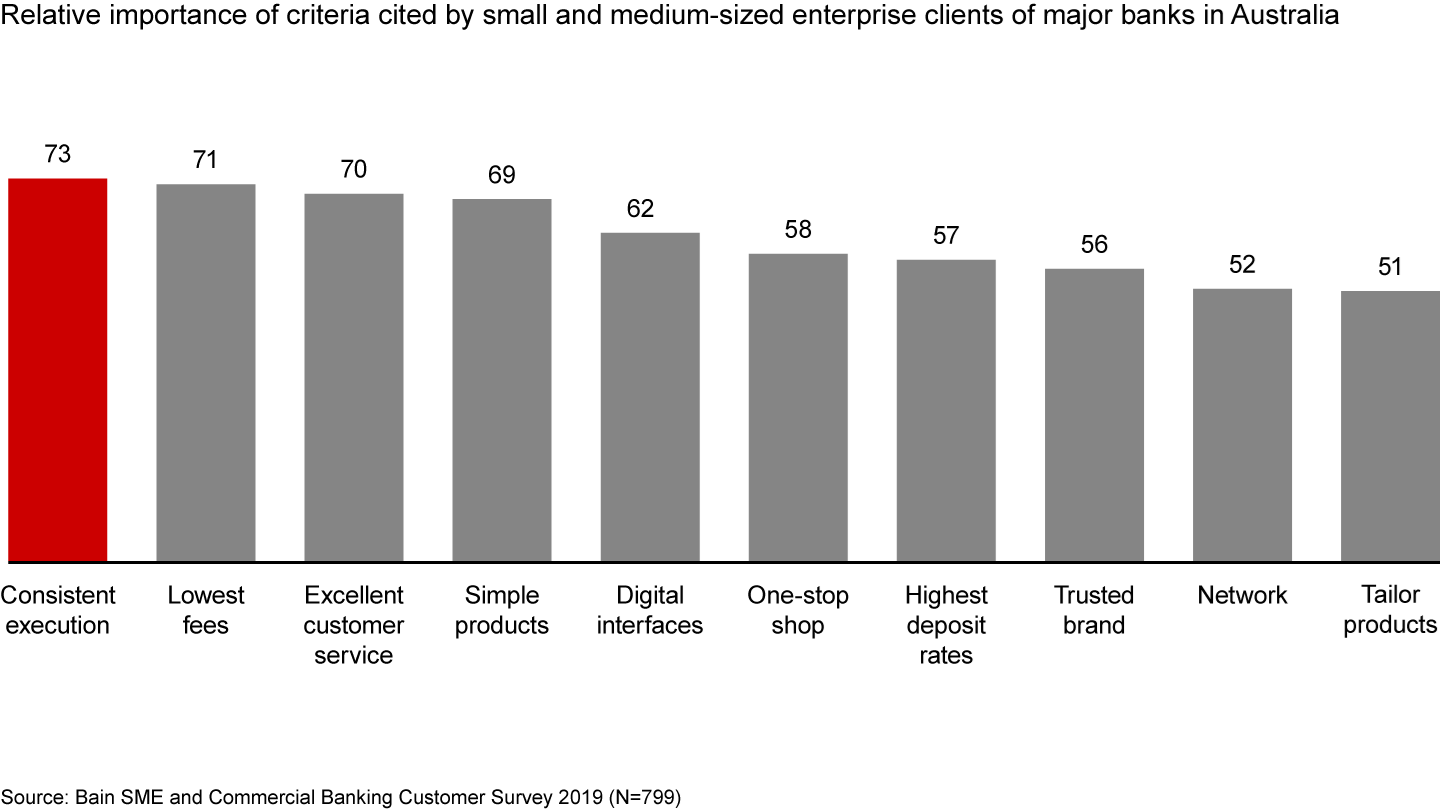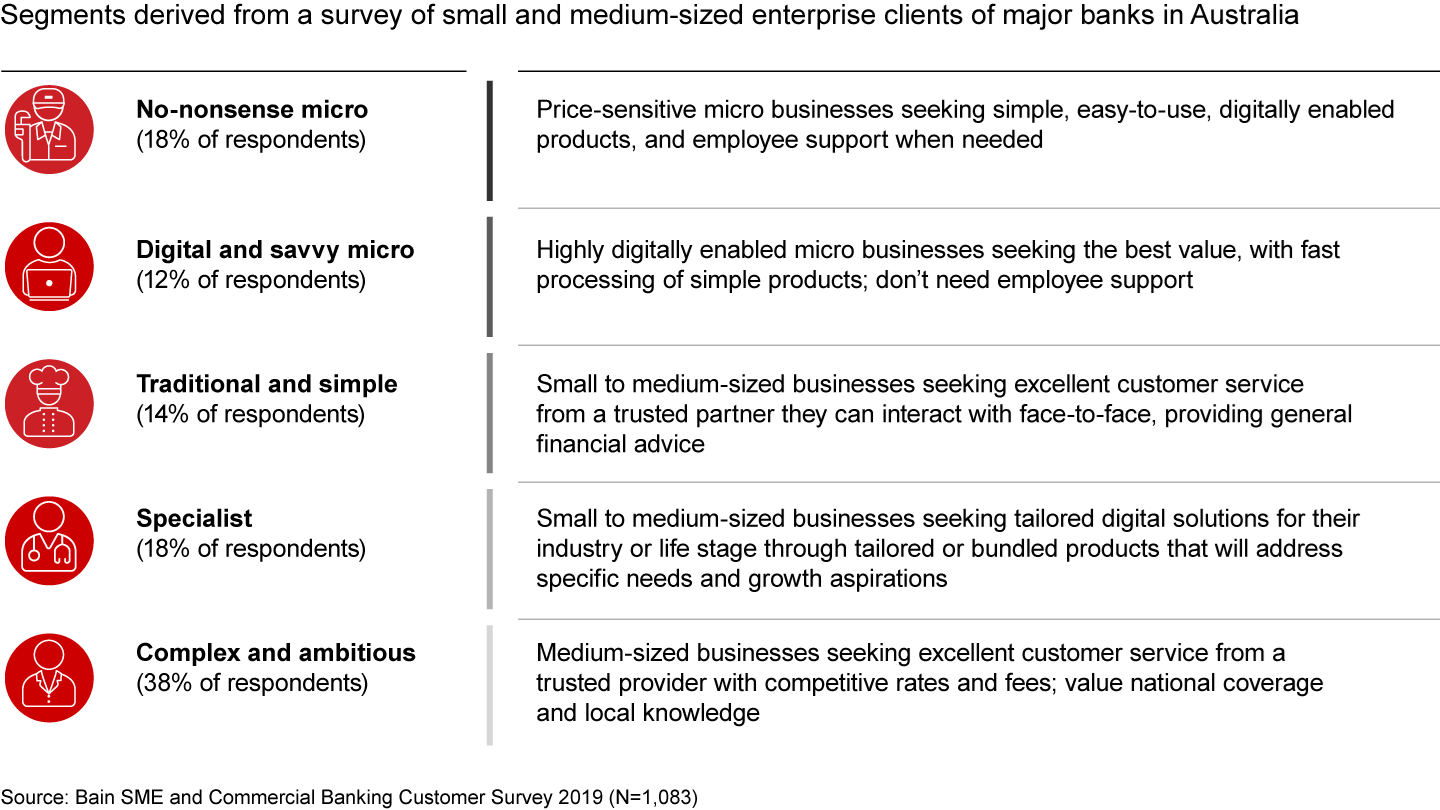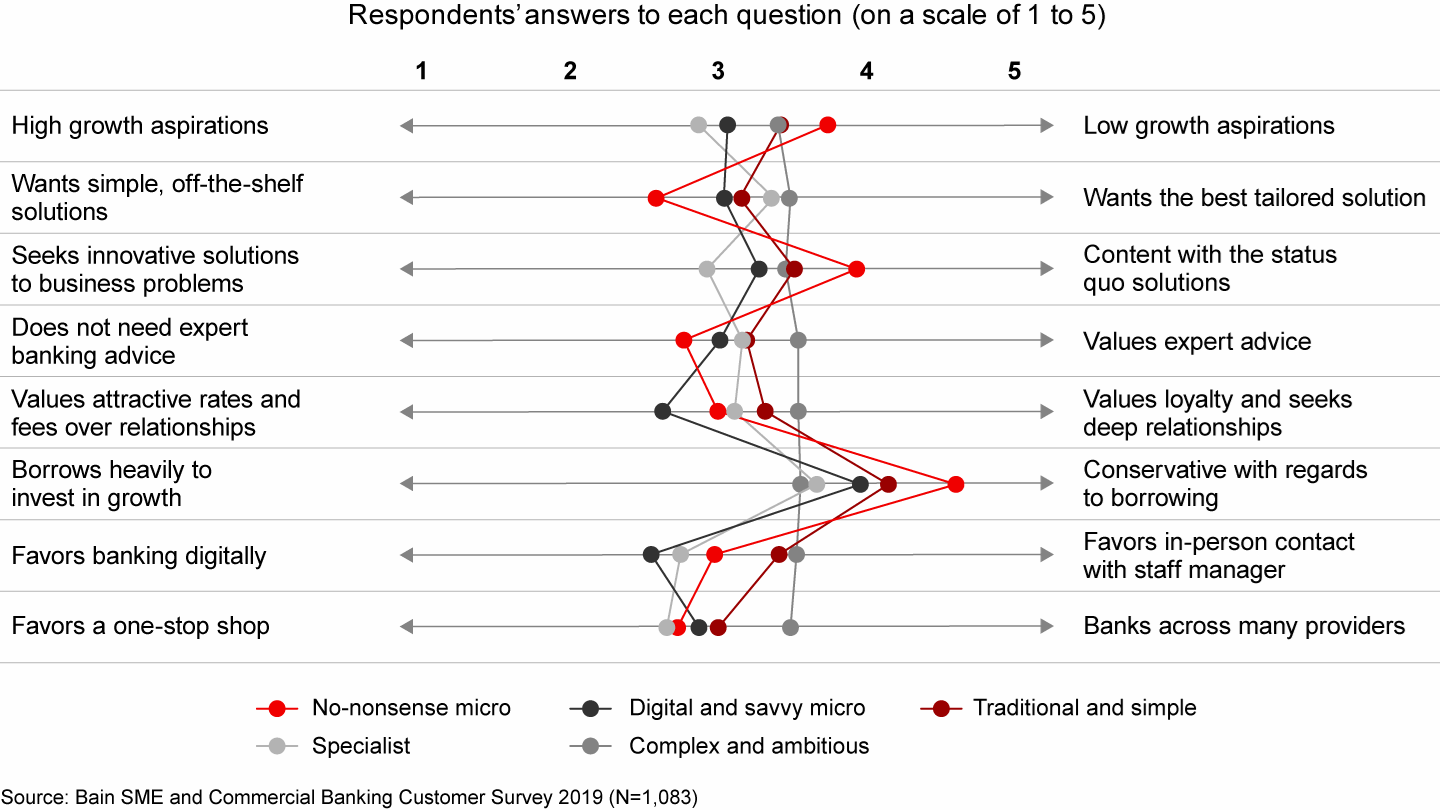Brief

Executive Summary
- The market for small to medium-sized enterprise (SME) banking platforms that assemble a group of specialist providers is getting crowded, and incumbent banks are still struggling to serve small firms profitably.
- Neobanks and incumbents alike have made the greatest progress by being deliberate on designing their ecosystem proposition differently for micro, small, and midsize clients.
- Even within those size groups, it pays to segment clients by their needs and priorities.
- A bank should ask both what it can do today to make life easier for SMEs as well as what the future platform will look like so that it can start building now.
Competition to serve the financial needs of small and medium-sized enterprises (SMEs) has moved beyond core banking to a constellation of products and services that make life easier for these clients. Increasingly, banks and other financial firms put these incremental offerings on a well-integrated, one-stop-shop platform that knits together an ecosystem of specialist providers.
Banks are investing in such platforms because SMEs, which constitute the vast majority of businesses worldwide, hold huge growth potential, yet they have been difficult to serve profitably. As digital technologies help reduce the cost of customer acquisition, service, and product distribution, financial firms see a path to sustained profitability.
More neobanks and fintechs, such as Starling and Revolut, have emerged with a focus on small firms with simpler needs. They rely on a modern technology stack that enables them to integrate easily with an ecosystem of third-party providers. In the UK, Starling has an exhaustive ecosystem—basically an app store for business services—that includes bookkeeping, insurance, cybersecurity, and loyalty programs. For instance, Equipsme provides affordable health insurance to employees directly through Starling Marketplace.
Given their greater cost efficiency, fintechs are trying to capitalize on certain clients’ disillusionment with incumbent banks. SMEs want not just low fees and rates but also consistent execution, excellent service, and simple products, a recent Bain survey in Australia found (see Figure 1).
For small and medium-sized enterprise banking customers, it’s not just about low fees


Competition is mounting from other quarters as well. Payments companies, such as Klarna and Square, are providing credit services to millions of customers in many countries. And major technology and e-commerce firms, such as Alibaba, have branched into lending and trade finance.
Incumbent banks, meanwhile, are playing defense. While many still struggle to serve small firms profitably, especially in the aftermath of the global financial crisis and riskier credit portfolios, others are adapting and building from strengths. For example, Danske, NAB, and others are making moves to develop and extend robust platforms that include ecosystems.
Take NAB in Australia. Its HICAPS proposition, designed for healthcare firms and professionals, allows clients to swipe a customer’s health insurance card to file a claim through HICAPS terminals on the customer’s behalf. And its Medfin proposition enables clients to get finance solutions for equipment and more.
The ecosystem model has benefited from open banking regulations in the UK and elsewhere that mandate open platforms. At the same time, developments in technology have oiled the integration of offerings from external partners at a lower cost and with a faster time to market. These are often the best ways for banks to provide a wide variety of services for customers without building out each one. For example, Santander includes Kabbage in its ecosystem for real-time credit-scoring services.
How needs change as firms grow
Neobanks and incumbents alike are finding they make the greatest progress by being deliberate about designing different propositions for micro, small, and midsize clients.
The micro client—for instance, a solo practitioner attorney, carpenter, or driver—usually needs products and services similar to basic retail banking. In fact, some micro clients will be hidden in the consumer section of a bank. Serving them well consists mainly of easy onboarding, smooth integration with personal financing, and a simple, convenient user interface.
If they grow to the small tier by hiring employees, their needs change and get more complex. Business lending, access to an adviser, and more complex support needs all become important. Serving small firms well requires banks and fintechs to excel on several fronts.
- Choose the high-value customer segments and which of their problems to solve.
- Assess the maturity of the bank’s internal technologies, processes, and capabilities in order to map out a blueprint for assembling the ecosystem of partners.
- Start from the core, and be realistic about the complexity of moving outward.
With further expansion, midsize firms typically advance in their management of the business and their spending. Given greater spending by these clients, banks can invest more in the development, integration, and tailoring of an ecosystem to individual clients. Compelling offerings here share several features.
- They are embedded more deeply into the client’s value chain.
- They depend on developing insights into a particular industry or business model.
- They rely on leading technology that midsize clients might struggle to source or integrate themselves.
Of course, there’s more to segmenting clients than size alone (see Figure 2). Micro clients, for instance, vary greatly in their price sensitivity and digital fluency. Some small businesses prize in-person service and general financial advice, while others seek mostly digital solutions or bundled services tailored to their industry. Their varying behaviors and attitudes will bear on their appetite for debt, simple or innovative solutions, and a one-stop shop for banking needs (see Figure 3).
Small and medium-sized enterprises can be usefully segmented by their banking needs


Customers in each segment behave differently, and they each have different attitudes


The future defines the present
Ecosystems launched by banks and fintechs are in early days. We’ve observed, however, that none of the promising contenders resulted from ad hoc or piecemeal projects. For instance, when executives in a bank’s strategy unit are looking for new revenue streams and start to hunt for partners to fold into a bank’s existing platform, they inevitably realize that their ambition will be hugely complicated and might lose money to boot.
Instead, a more systematic approach stands a better chance of success, regardless of client size, industry, or other circumstances. It should combine two perspectives.
First, a present-forward lens consists of an honest assessment of the organization’s current capabilities and asks what the bank can do today that will make life easier for small and midsize clients. For instance, the bank could figure out how to remove friction and annoyances from its current offerings. It could add attractive incremental services and integrate them seamlessly. In a few cases, it could create industry-focused platforms.
Second, a future-back lens defines the desired future state and asks how the bank can accelerate the process of reaching it. The future platform will likely consist of a digital-first, integrated platform that serves even the smallest clients and raises the business potential of medium-sized clients through features such as advanced analytics.
Small and midsize companies have a wealth of options for their banking and broader financial needs. Banks that carefully choose their client segments and tailor the ecosystem to high-value clients stand to win in an increasingly crowded marketplace.